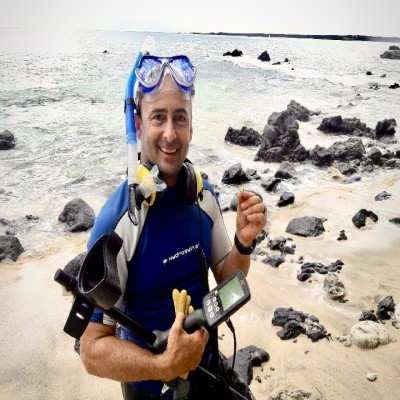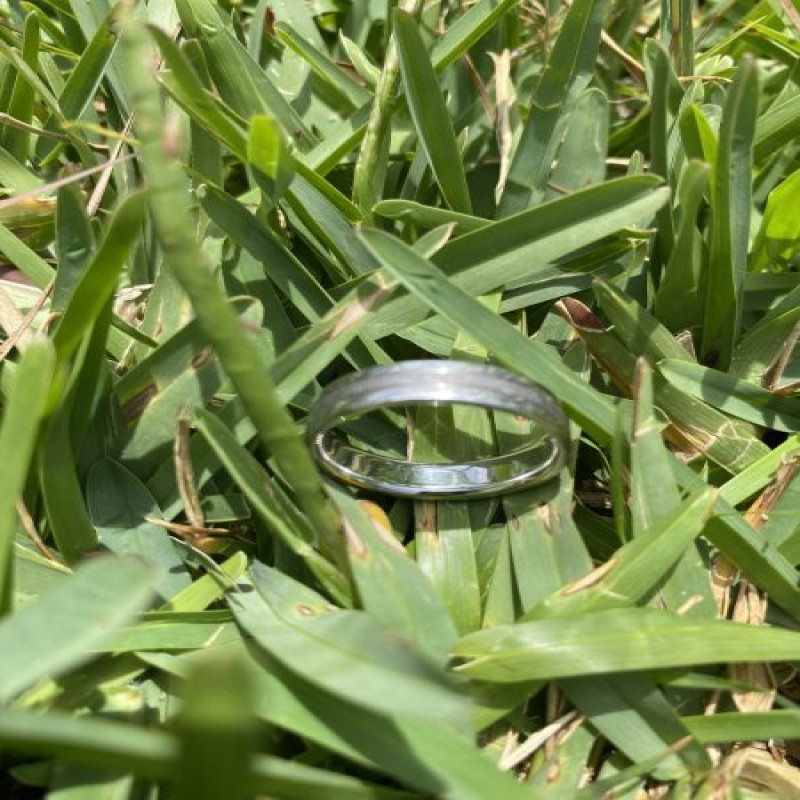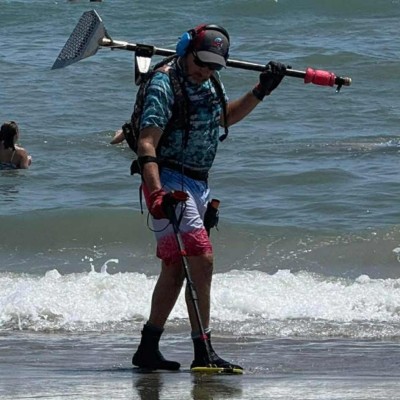Beaches, Shallow Water, Diving, Parks, Private Residences etc…I have even had to search vehicles.
I LOST MY RING AT THE BEACH, WHAT TO DO?
TIME IS OF THE ESSENCE! This cannot be stressed enough. Do not hesitate or delay in calling for professional assistance. While some may try to locate the item on their own or go to a box store to buy a metal detector, the odds of recovery exponentially decrease with time. Weather changes, beaches and tides shift, sand moves, and many a vacation’er, wandering metal detecting enthusiast, or curious “passer-by” can find and take your item. The quicker we are able to your location the better (day or night).
TAKE NOTE, BE AS PRECISE AS POSSIBLE:
Take 360 degree pictures of the area so I utilize the landmarks to help pinpoint the location of the lost item.
LOCATION, LOCATION, LOCATION: First, don’t panic! Try to identify the location of where the item was lost or you first noticed it was missing.
Second, take note of nearly landmarks or other, preferably “fixed”, reference points such as rocks, pier, trees, shoreline features, etc. AND distance(s) therefrom. If possible, try not to rely solely on beachgoers, umbrellas, anchored boats, or other moveable objects, while helpful in the short term, these may shift or change unexpectedly or upon short notice.
DESCRIPTION OF ITEM – write down or make a mental note of the item’s description, being as precise as possible, carefully noting characteristics (14k, 18k, initial(s) or inscriptions, if any, etc.), size, dimensions, configuration (diamond solitaire with raised post). If able, have a photo of the item ready. Ownership verification may be an issue, especially if law enforcement or insurance become involved.
GPS LOCATION MARK – if possible, use your phone or smart device to “drop a pin” or otherwise mark location data. Some devices may automatically attach location data to photos, so be sure to “take a picture”, which may help in more ways than one, see below.
RETRACE YOUR STEPS – If uncertain of the location, try to retrace your steps as best as possible, taking note of the path traveled, distances, landmarks, etc.
PICTURE(S) – take a picture of the general area which include reference points listed above. A picture is often better than a thousand words…well, in this case it may make all the difference. Also, be sure to review and save any pictures taken earlier as these may help to retrace steps, occurrences, etc.
MARK & PROTECT THE AREA – if possible, try to protect or limit access to the search area. Traffic and pedestrians can not only disrupt dirt, sand, or adjacent vegetation, but also unexpectedly step-on or drive the item “deeper” thus making detection more difficult, or they can find and quickly pocket the item without notice or even telling you. If you lost your ring in a grassy area, don’t let it get ruined by the lawnmower.
NOTICE – if staying at a hotel, club or visiting a public establishment, don’t forget to let the management know, advising of your loss and leaving both your local (temporary) and permanent contact information. Also, depending on the value of the item(s), notifying local LAW ENFORCEMENT (Sheriff, Park Ranger, Police) may be useful, especially if an insurance claim should later become necessary.
DUPLICATE OR REPLACEMENT – if you have a duplicate or facsimile available, be sure to bring it with you. This may be useful in providing additional search data, including but not limited to item conductivity, sound, and composition, all of which will be very helpful and determine which metal detector may be used, best suited for the task.














